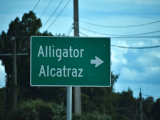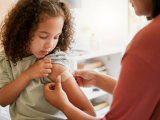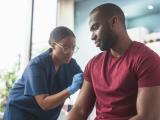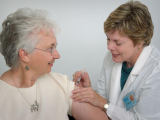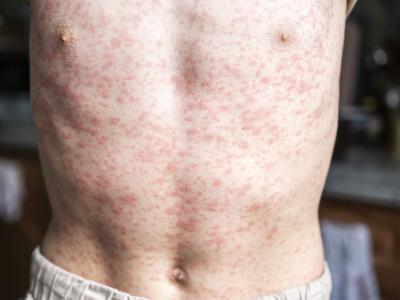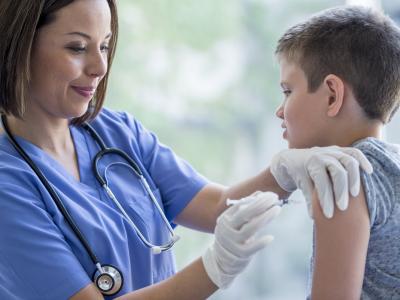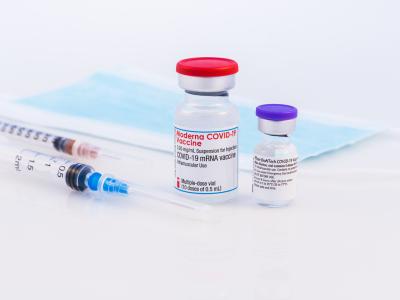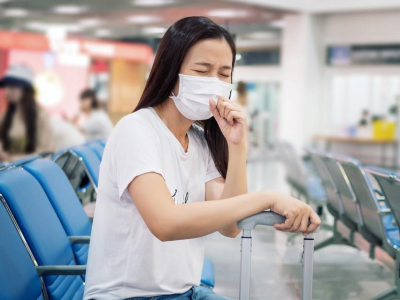Aug 21, 2009 (CIDRAP News) – Federal health officials today said the first results of novel H1N1 vaccine trials—needed for determining the number and size of doses people will get—are expected in mid-September.
Two trials in adult and elderly volunteers started Aug 7 and are now almost fully enrolled, said Dr. Anthony Fauci, director of the National Institute of Allergy and Infectious Diseases (NIAID), at a press teleconference.
"We expect first-dose data somewhere around mid-September, if all goes well . . . and second-dose data somewhere around mid-October," he said.
The trials will help determine the dose size—15 versus 30micrograms (mcg)—and whether each person will need one or two doses to get a good immune response.
Federal officials have been saying two doses will probably be necessary, because most people lack any immunity to the novel virus. But no decision has been made yet, and today officials said it will depend on the early results of the trials. A recommendation for two doses will slash the effective vaccine supply and complicate vaccination planning for the fall, as millions of people will need a dose of seasonal flu vaccine plus two doses of the novel H1N1 vaccine.
Responding to a question, Dr. Jesse Goodman, acting chief scientist and deputy commissioner of the Food and Drug Administration (FDA), noted that young children typically require two doses of inactivated flu vaccine.
For adults, he said, "We will not know until we see the results of the clinical studies whether . . . older individuals will also need two doses. I think we all feel that this is a distinct possibility that we need to be prepared for, but it's also possible that they will have enough cumulative immunity to other H1N1 strains that we may see an effect after one dose."
Fauci added, "You just really have to stay tuned. . . .We're going to know as we get into mid to late September whether or not we have a pretty good response to that first dose of 15 or 30 [mcg]."
This week the NIAID announced the start of two H1N1 vaccine trials in children aged 6 months to 17 years, after the early experience in the adult trials showed no immediate safety problems. Fauci said the children's trials, involving about 2,800 subjects, are expected to yield first-dose data in late September and second-dose data in late October.
He also announced plans to conduct three trials involving pregnant women, testing one or two doses of 15 or 30 mcg, with about 120 women in each trial. The tests are scheduled to start in early September.
In addition, trials in which different adjuvants will be matched with multiple vaccines will start in late September, Fauci reported. Goodman reiterated today that no decisions have been made about adjuvant use.
Fauci said the NIAID-sponsored trials will involve about 4,500 volunteers in all.
In other comments at the press conference, Dr. Jay Butler of the Centers for Disease Control and Prevention (CDC) slightly revised the recently reduced forecast for the early supply of H1N1 vaccine. At a meeting a week ago, a Department of Health and Human Services official downsized the forecast of what will be available in mid October from the previous 120 million doses to 45 million doses.
Butler said today, "We're expecting somewhere between 45 million and 52 million doses to be available by mid October. This will be followed by weekly availability of vaccine up to about 195 million doses by the end of the year."
In other observations, Butler released the CDC's latest surveillance data, showing that the nation has had 7,963 hospital cases of novel H1N1 flu and 522 deaths so far. He said 75% of the hospital cases and 60% of deaths involved people under age 49.
H1N1 activity appears to be declining in the southern hemisphere, and the epidemiology of the disease there is very similar to what was seen in the United States this past spring, he reported. No significant changes in the virus have been detected in the southern regions.
Today the CDC published the full-length version of the Advisory Committee on Immunization Practices' recommendations on use of novel H1N1 vaccines. The recommendations on target groups for vaccination and related issues were first made public on Jul 29. The detailed version appears as an MMWR Dispatch.
See also:
Jul 22 story CIDRAP News story on NIAID-sponsored clinical trials
http://www.cidrap.umn.edu/cidrap/content/influenza/swineflu/news/jul2209trials.html
Jul 22 NIAID news release on H1N1 vaccine clinical trials
http://www.niaid.nih.gov/news/newsreleases/2009/Pages/VTEU_H1N1.aspx
NIAID questions and answers on pediatric vaccine trials
http://www.niaid.nih.gov/news/QA/Pages/qaH1N1pedvax.aspx
MMWR Dispatch on use of H1N1 vaccine
http://www.cdc.gov/mmwr/preview/mmwrhtml/rr58e0821a1.htm?s_cid=rr58e0821a1_e


